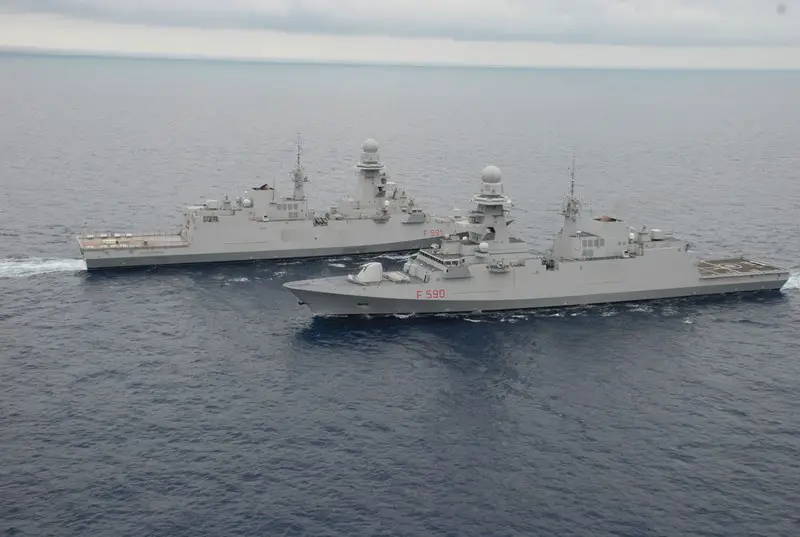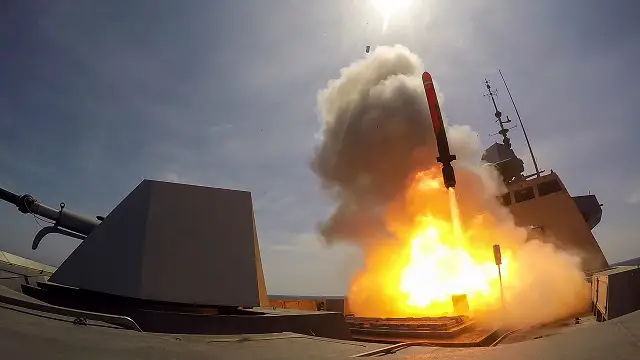Re: Fragatas FREMM franco-italianas
Enviado: Qui Fev 12, 2015 7:05 am
France to Sell, Lease Back Major Weapons to Raise Cash for Defense
(Source: Defense-Aerospace.com; published Feb 11, 2015)
By Giovanni de Briganti
PARIS --- Faced with a shortfall of €2.2 billion in its 2015 defense budget, the French defense ministry is preparing to sell and lease back as many as six Airbus A400M airlifters and two or three FREMM multipurpose frigates this year.
The cash received from the sale of the weapons will be paid into the defense budget, and the ministry will lease the same equipment back from special “project companies” – themselves owned and bankrolled by the French state -- to which it will make long-term lease payments.
The need for innovative financing solutions, strongly backed by Defense Minister Jean-Yves Le Drian, stems from the fact that the defense procurement budget will have a total funding shortfall of €5.5 billion over the duration of the 2014-2019 multi-year program law, and of €2.2 billion this year.
“Unless we change our budget mindset, we’ll run straight into the budget wall,” French defense procurement chief Laurent Collet-Billon told reporters here Feb 9. He said that current plans call for the first “project companies” to be formed this summer, although many details remain to be worked out.
Such a leaseback arrangement, common in the private sector and particularly in commercial aviation, will be authorized for France’s defense administration by the new economy reform bill, known as the Loi Macron after Economy Minister Emmanuel Macron, that is now being debated in Parliament.
According to current plans, the “project companies” will be state-owned, and funded by the government with the proceeds from the sale of television broadcast frequencies (about €2.6 billion), from the sale of state shareholdings in private-sector companies (no estimate), from the sale of surplus military real estate (about €500 million) and from other sources.
Ultimately, DGA plans to extend the sale and leaseback arrangements to other types of equipment, Collet-Billon said, such as the defense ministry’s fleets of C-295 light transport aircraft and of over 500 military helicopters. Other categories of equipment could also be covered, but he excluded equipment intended for direct combat, such as tanks or armored vehicles.
Some questions remain about the proposed arrangements, however, as they fly in the face of traditional budgetary orthodoxy.
One issue is that the leaseback moves acquisition funds from the capital account to the Operations and Maintenance accounts, thereby bypassing Parliamentary control on the defense budget.
Secondly, it accomplishes this accounting sleight of hand by channeling the proceeds from the disposal of state assets through a complex circuit before paying them into the defense ministry coffers. It would seem much simpler for the government to pay the money it obtains from the asset disposals directly to the defense ministry.
Many details remain to be ironed out before the summer, when Colin-Billon expects the first “project company” to be set up. One is the cost of the lease payments, which will depend on the interest rate these companies will charge, and the new financial liabilities they will add to the O&M accounts.
Another issue is that of insurance. In France, the government does not insure its assets, but if these assets are transferred to a company subject to company law, insuring its assets will be required, especially if they are used for military missions, and even more if these missions take place overseas.
http://www.defense-aerospace.com/articl ... -cash.html
(Source: Defense-Aerospace.com; published Feb 11, 2015)
By Giovanni de Briganti
PARIS --- Faced with a shortfall of €2.2 billion in its 2015 defense budget, the French defense ministry is preparing to sell and lease back as many as six Airbus A400M airlifters and two or three FREMM multipurpose frigates this year.
The cash received from the sale of the weapons will be paid into the defense budget, and the ministry will lease the same equipment back from special “project companies” – themselves owned and bankrolled by the French state -- to which it will make long-term lease payments.
The need for innovative financing solutions, strongly backed by Defense Minister Jean-Yves Le Drian, stems from the fact that the defense procurement budget will have a total funding shortfall of €5.5 billion over the duration of the 2014-2019 multi-year program law, and of €2.2 billion this year.
“Unless we change our budget mindset, we’ll run straight into the budget wall,” French defense procurement chief Laurent Collet-Billon told reporters here Feb 9. He said that current plans call for the first “project companies” to be formed this summer, although many details remain to be worked out.
Such a leaseback arrangement, common in the private sector and particularly in commercial aviation, will be authorized for France’s defense administration by the new economy reform bill, known as the Loi Macron after Economy Minister Emmanuel Macron, that is now being debated in Parliament.
According to current plans, the “project companies” will be state-owned, and funded by the government with the proceeds from the sale of television broadcast frequencies (about €2.6 billion), from the sale of state shareholdings in private-sector companies (no estimate), from the sale of surplus military real estate (about €500 million) and from other sources.
Ultimately, DGA plans to extend the sale and leaseback arrangements to other types of equipment, Collet-Billon said, such as the defense ministry’s fleets of C-295 light transport aircraft and of over 500 military helicopters. Other categories of equipment could also be covered, but he excluded equipment intended for direct combat, such as tanks or armored vehicles.
Some questions remain about the proposed arrangements, however, as they fly in the face of traditional budgetary orthodoxy.
One issue is that the leaseback moves acquisition funds from the capital account to the Operations and Maintenance accounts, thereby bypassing Parliamentary control on the defense budget.
Secondly, it accomplishes this accounting sleight of hand by channeling the proceeds from the disposal of state assets through a complex circuit before paying them into the defense ministry coffers. It would seem much simpler for the government to pay the money it obtains from the asset disposals directly to the defense ministry.
Many details remain to be ironed out before the summer, when Colin-Billon expects the first “project company” to be set up. One is the cost of the lease payments, which will depend on the interest rate these companies will charge, and the new financial liabilities they will add to the O&M accounts.
Another issue is that of insurance. In France, the government does not insure its assets, but if these assets are transferred to a company subject to company law, insuring its assets will be required, especially if they are used for military missions, and even more if these missions take place overseas.
http://www.defense-aerospace.com/articl ... -cash.html














